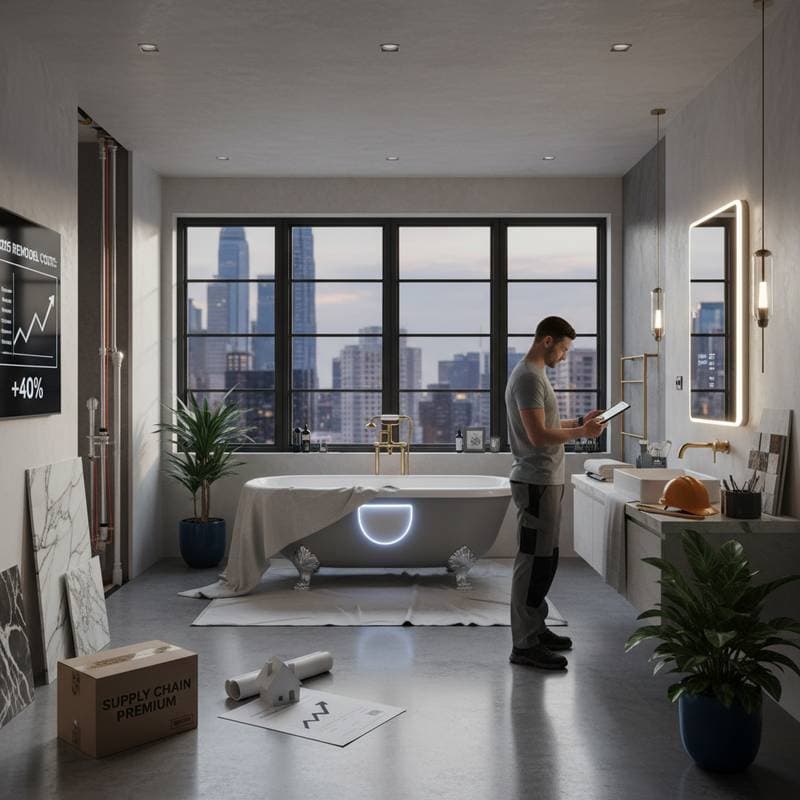2025 Attic Insulation Costs: Maximize Your ROI Now
Upgrading attic insulation ranks among the most effective strategies for reducing energy bills and enhancing home comfort. Homeowners frequently underestimate this upgrade due to concerns about expense or complexity, yet the return on investment typically surpasses that of many other improvements. By grasping the key cost factors, material options, and potential savings, individuals can select solutions that align with their financial plans and specific home requirements.
Understanding What Drives Attic Insulation Costs
Several variables influence the pricing of attic insulation. These elements contribute differently to the overall estimate, resulting in significant variations among quotes from contractors.
Primary cost drivers encompass:
- Type of insulation material. Options such as fiberglass, cellulose, and spray foam differ in cost and effectiveness.
- Attic square footage. Greater areas demand increased amounts of material and extended labor efforts.
- Condition of existing insulation. Removal of deteriorated or outdated layers may prove necessary prior to installing new material.
- Access and structural layout. Confined or non-standard configurations extend installation time and labor costs.
- Regional climate conditions. Residences in cooler regions require elevated R-values to achieve peak efficiency.
Energy efficiency analyses from the U.S. Department of Energy indicate that attic insulation upgrades can decrease heating and cooling expenses by as much as 15 percent. These reductions hinge on baseline insulation quality and the home's capacity to retain thermal energy.
Material Options and Their Value
Various insulation materials present unique benefits. Selection should reflect priorities related to energy conservation, occupant comfort, and ongoing upkeep.
Fiberglass batts and rolls provide an economical and accessible solution. Installation proceeds straightforwardly in unobstructed joist areas, though performance diminishes in atypical configurations. Costs average lower per square foot, appealing to those managing budgets closely. For a standard 1,000-square-foot attic, expect expenses between $1.50 and $2.50 per square foot, including basic labor.
Blown-in cellulose or fiberglass excels in covering attics featuring obstacles or irregular framing. This approach seals voids near plumbing or electrical components, minimizing air infiltration. Professionals ensure uniform application, which elevates overall thermal performance. Cellulose, derived from recycled paper, often costs $1.80 to $3.00 per square foot and offers eco-friendly attributes alongside solid moisture resistance.
Spray foam insulation stands as the high-end choice. It expands to create a seamless, airtight seal that blocks drafts and enhances insulation value. Initial outlay ranges from $3.00 to $5.50 per square foot, yet superior longevity and efficiency yield substantial savings over decades. Experts note that closed-cell spray foam maintains R-values above 6 per inch, far exceeding traditional batts, and resists settling or sagging for 25 years or more.
ROI Breakdown: Why Attic Insulation Pays Off
Effective attic insulation generates tangible benefits across multiple dimensions. Discussions among energy professionals on forums like Reddit and Houzz highlight how such upgrades recover costs swiftly via diminished utility payments and elevated living standards. Most owners offset installation expenses within three to five years through reliable reductions in energy use.
Key return on investment advantages include:
- Decreased monthly energy expenses. Less reliance on heating and cooling systems translates to steady annual savings, often $200 to $500 depending on home size and location.
- Enhanced indoor comfort levels. Stable temperatures across rooms eliminate drafts and hot spots, fostering a more pleasant environment.
- Elevated property market value. Prospective buyers prioritize energy-efficient features, potentially increasing resale prices by 5 to 10 percent in competitive markets.
- Extended HVAC system durability. Retained conditioned air reduces operational cycles, lowering maintenance needs and prolonging equipment life by up to 20 percent.
Although outcomes fluctuate with local weather and dwelling dimensions, attic insulation emerges as a leading renovation for financial recovery. Integrating air sealing measures alongside insulation can amplify energy gains by an additional 10 to 20 percent, accelerating payback periods.
Choosing Between DIY and Professional Installation
For compact attics with straightforward access and even joists, DIY methods work well using fiberglass batts or rolls. Basic tools like a utility knife, stapler, and safety equipment suffice for the task. Nonetheless, errors in placement create voids that compromise efficiency, potentially negating labor cost savings. Beginners should measure R-value needs precisely—aim for R-38 to R-60 in most U.S. zones—and wear respirators to avoid fiberglass irritation.
Hiring professionals ensures precise material choices, thorough air sealing, and optimal R-value attainment. They furnish workmanship guarantees, safeguarding the project investment. Spray foam and blown-in applications necessitate expert handling to avert health risks from chemicals or uneven coverage. Numerous specialists conduct complimentary energy audits, identifying leaks via infrared scans or blower door tests before commencing work.
Cost-Saving Tips Without Cutting Corners
Strategic approaches allow expense reduction while upholding superior results.
- Solicit quotes from several contractors. Rates differ widely, even locally; aim for at least three estimates to identify competitive pricing.
- Pursue available rebates and incentives. Programs from utilities or federal initiatives, such as those under the Inflation Reduction Act, reimburse up to 30 percent of costs for qualifying upgrades.
- Emphasize air sealing first. Addressing leaks with caulk or foam prior to insulation enhances effectiveness, sometimes permitting thinner layers without performance loss.
- Schedule installation in off-season periods. Mild weather months see reduced demand, prompting contractors to offer discounts of 10 to 20 percent.
Ensuring Long-Term Insulation Performance
Periodic evaluations sustain the upgrade's effectiveness post-installation. Inspect the attic biennially for moisture accumulation, pest intrusions, or settled material that diminishes insulation depth. Maintain unobstructed vents to avert condensation, which erodes material integrity over time. Should temperature inconsistencies or rising bills arise, engage a specialist for thermal imaging to verify R-value retention.
Beyond immediate comfort, a fortified attic insulation system delivers enduring rewards: slashed energy expenditures, bolstered home equity, and a more sustainable living space.





